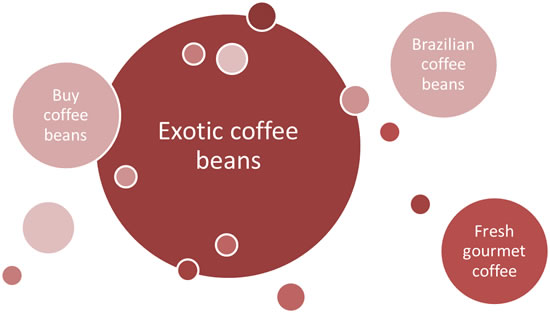3 Ways to Map Keywords to Your Small Business Web Site
Maybe you already know your web site’s “money” keywords. You know — the ones that are going to get you to page #1 of Google when your ideal customers search online. Or maybe you’re researching keywords right now. Either way, once you have them, how do you optimally map keywords your web site?

Here’s how to map keywords to your web site in order to bring you the best organic search traffic from Google.
First we need to understand a critical concept.
Yes, a page can target multiple keywords. But only one keyword can be given the prime SEO real estate in the url, title tag, h1 tag and description tag.
Learn how to perform effective search engine optimization for these page elements
This single most-valuable keyword for the page is called the primary keyword. Other keywords that we include on the page are called secondary keywords.
Now let’s see how to optimally map keywords to a web site.
1) Do you have a single page web site?
Not counting pages for About, Contact, Privacy, etc., is your site basically a single page? I.e., is your site content primarily just your home page, which introduces your offering and get visitors to take the next action?
If so, the keyword mapping strategy is simple:
- Make your most important keyword your primary keyword for optimizing your home page.
- Choose 1-2 additional keywords as secondary keywords for your home page.
- If applicable, choose any remaining keywords to apply to the About page.
Simple Web Site Example:
Primary keyword for home page: “exotic coffee beans”
Secondary keywords for home page: “Brazilian coffee beans”, “buy coffee beans”
Keyword for About page: “coffee bean supplier”
Done!
2) Do you have a single page plus a blog?
Adding a blog gives you great additional opportunities to leverage keywords. Most importantly, you can target the numerous long-tail keywords that can bring you highly targeted traffic.
Now your keyword mapping strategy becomes:
- Follow the same steps as in #1 for the home page and About page.
- For each blog post, choose additional keywords or variations on your keywords to optimize for.
For blogs, too, you can either focus on just a single primary keyword or also add secondary keywords.
And here is one of the wonderful things about blogs. If you publish 100 posts, then you have the opportunity to optimize for 100+ additional valuable keywords and variations!
Blog Example:
Keyword ideas: “gourmet Brazilian coffee beans”, “fair trade coffee beans”, “buying exotic coffee in the U.S.”, etc.
Obviously many of those variations will see much less search traffic. But the traffic they bring will be highly targeted to your particular blog post. This targeting results in more engaged visitors who will be more likely to actually buy from you.
3) Do you have a multi-page site (with or without a blog)?
A multi-page site gives you the opportunity to slice your keyword mapping strategy a different way, and much more effectively.
If you have a multi-page business site, that likely means that you have multiple products or services that you offer. More importantly, it means you likely have multiple target customer segments.
By far, the most effective web pages are those that focus with laser-like precision on a clearly defined customer segment. The images, the headings, the copy, the testimonials, the CTAs (Calls to Action) — everything speaks directly to a particular customer segment using the customer’s language to describe their urgent needs.
So now our optimal keyword mapping strategy becomes:
- For your Home Page: Choose the most high-value keyword that represents the entirety of your business offering (again, you can choose to use both a primary keyword and secondary keywords)
- For each highly targeted Landing Page: Choose the most high-value keyword that focuses squarely on what that customer segment is searching for
- For your blog (if you have one): Same strategy as in #2.
Landing Page Example:
Customer Segment: Caterers for Executive Meetings
Keyword: “coffee for executive catering”
Image: Executives chatting in a board room over cups of hot, fresh coffee
Headline: Nothing says “Executive-quality service” like fresh coffee made from our exotic Brazilian coffee beans
etc.
Now you know how to map keywords to your site for optimal impact for both search engines and for your target customers. But how do you actually SEO-optimize each page with these keywords? What do you do with both the visible words on the page and the words in non-visible HTML tags, all of which are critical for search engine rankings?
Learn how to perform effective on-page search engine optimization

Great article. I’m just starting out.